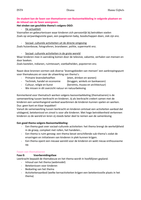Summary
Summary homocide - murder and partial defences to murder notes
- Module
- Criminal Law (LAW107)
- Institution
- The University Of Liverpool (UoL)
Notes on murder and partial defences to murder including Actus Reus and mens rea as well as loss of control and diminished responsibility. includes key cases and case facts and presented in a colourful format
[Show more]








